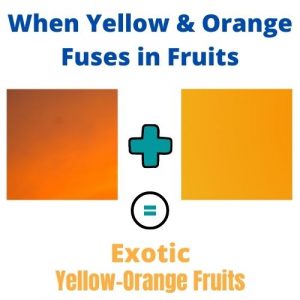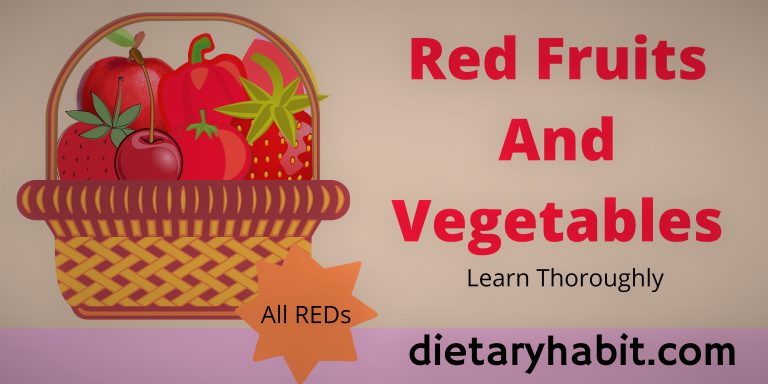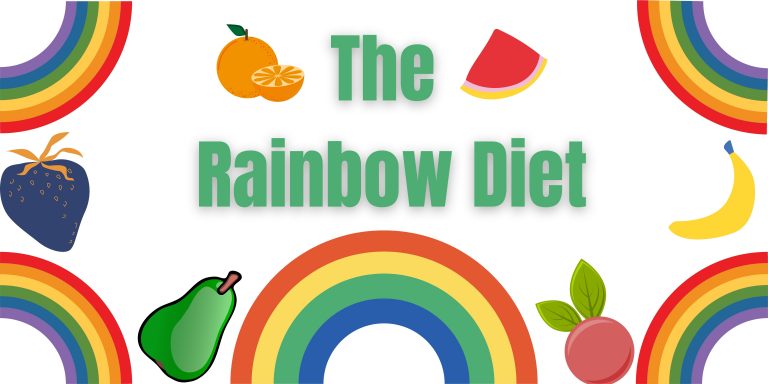Aesthetic Yellow and Orange Fruits (A Combo You Should Pay Heed Now)

Yellow-orange fruits and vegetables are no less powerful health benefactors than their colorful counterparts like green, red, pink, and blue fruits and vegetables. Among the yellow-orange fruits, orange fruit is the most interesting one, packed with incredible nutrition and antioxidant profile. But is it naturally yellow? Are there yellow oranges? But why are the oranges yellow? We’ll dig into all of the questions and find the most satisfactory answers.
Let’s delve into the facts about yellow-orange fruits and vegetables without any further ado. However, your interest in yellow oranges will also find a satisfactory end here, hopefully. To know more, you can go through our articles which extensively cover all the colorful fruits and vegetables.
What food is yellow and orange
Are you looking for yellow and orange food? Yellow and orange are two different color spectrums in the rainbow diet. They reflect two different color frequencies though it may seem challenging to distinguish between them when they are near in the shades.
Yellow and orange foods are rich in carotenoids. If they have the same phytochemicals, you may wonder why they are different in color? Carotenoids are categorized into carotene and xanthophyll. Yellow foods are rich in xanthophyll, whereas orange foods are jam-packed with carotene.
Yellow-orange foods are beneficial for health in every aspect. We’ve covered them thoroughly in this blog. Scroll our in-depth content about yellow and orange foods and learn them thoroughly.
Exotic Orange Fruits & Vegetables With Amazing Medicinal Properties
12 Best Yellow Fruits & Vegetables To Ward Off Chronic Diseases
What fruit is yellow-orange
Fruits reflect different color frequencies during their lifetime. Hence they create the illusion of different colors in our eyes. Yellow-orange fruits are common in our daily life. If you’re into a healthy dietary habit, you’re already introduced to varieties of yellow and orange fruits.
A yellow-orange fruit may adopt both the yellow and orange hues in its lifecycle. The color changes when the orange fruit passes through different maturity phases. The yellow color indicates the onset of the maturity of the fruit. And orange is intriguingly related to full maturity. If any season can be associated with the orange color, it’s the Fall. Everything in nature seems to adorn the orange color in this season of ultimate maturity.
We’ve already covered yellow and orange fruits and vegetables thoroughly. You can scroll through the yellow-orange fruit list in this blog and learn its benefits if you’re interested. However, here’s a list of the most prominent yellow and orange fruits.
- Oranges
- Asian pears
- Mandarins
- Bananas
- Tangerines
- Pineapples
- Kumquats
- Star fruits
- Persimmons
- Apricots
- Yellow apples
- Nectarines
- Peaches
- Cantaloupes
- Mangoes
- Papayas
- Passion fruits
- Blood oranges
- Lemons
- Grapefruits
Yellow and orange fruits offer amazing and unique health benefits. Yellow-orange fruits are choke-full of antioxidants and anti-inflammatory nutrients. Alpha-carotene in yellow and orange fruit enhances reproductive functioning. Fourteen types of carotenoids guard the overall immunity of the ovary from the assault of free radicals. Moreover, yellow-orange fruit contains important carotenes that maintain eye health and skin tone.
What are yellow and orange vegetables?
I can bet you have at least one favorite vegetable from the yellow-orange family. The orange and yellow vegetables’ attractive look and gorgeous appearance are enough to ramp up your hunger.
Yellow and orange vegetables are jam-packed with highly active antioxidants like alpha-carotene, beta-carotene, xanthophyll, lycopene, etc. They provide both dietary fibers and important anti-inflammatory properties. Eating orange and yellow vegetables decrease the risks of chronic diseases dramatically.
We’ve great resources covering yellow and orange vegetables in this blog. You can scroll through the articles to learn them thoroughly.
- Pumpkins
- Corn
- Carrots
- Turmeric
- Orange bell peppers
- Sweet potatoes
- Yams
- Winter squash
- Yellow peppers
- Golden beats
- Yellow beans
Are there yellow oranges?
Yes, there are yellow oranges widely available in the orchards and the stores. Though they occur naturally, they’re also painted orange for some reason most of the time. However, The color of oranges depends on some factors. Those factors impact the maturity and ripeness of the fruits. Major factors are-
- Types of soil they grow in
- Climatic conditions
- Variation of oranges
- Cultural differences
In some parts of the USA, oranges start to ripen even when they’re green due to the soil and weather they grow in. But most of the oranges adorn their typical deep yellow or orange hue when they mature. The color occurs due to the spikes in carotene production.
Why are the oranges yellow
Carotenoids, more specifically carotenes like alpha-carotene, and beta-carotene, are responsible for the exotic orange color of oranges. However, ripe oranges can be green, yellow, and orange. It depends on various factors. But most people think matured oranges have a deep yellow color which isn’t true in all cases.
Oranges are painted yellow so that their sales increase. To satisfy most people’s assumptions, orange producers paint the rind of green oranges into yellow color. The color indicates the ripeness of the fruit as deep yellow or orange color always symbolizes maturity. If the sellers try to sell them green, most people think that unripe oranges are picked. So orange merchandisers sell them by ripening them artificially or painting their peel into yellow color.
Can you eat yellow oranges?
You can eat yellow oranges as the Food and Drug Administration approves the artificial coloring under certain conditions. If green oranges meet the maturity standard, they can be artificially colored into yellow oranges. FDA approves such activities in certain orange growing areas where retailers face certain weather conditions and cultural barriers.
The artificial coloring process is healthy as long as the retailers follow the standard procedures. They can use ethylene gas to speed up the blanching process and retrieve the yellow color. The rind of the orange is colored only, and the inside of the orange remains untouched. As we eat the inner part only, not the peel of oranges, artificial coloring doesn’t impact our health significantly.
Last words
Yellow-orange fruits and vegetables are one of the blessings of nature. If wisely utilized, you can maintain the essence of your health with these yellow-orange fruits and vegetables. You can also adopt the ongoing trend of going on a rainbow diet. Incorporating colorful foods on the plate will significantly increase your stamina and spirits.
Moreover, eating red, green, pink, or white fruits and vegetables is a great option to stay healthy and heartier. Build a healthy dietary habit by incorporating a balanced diet and going high on activities.



